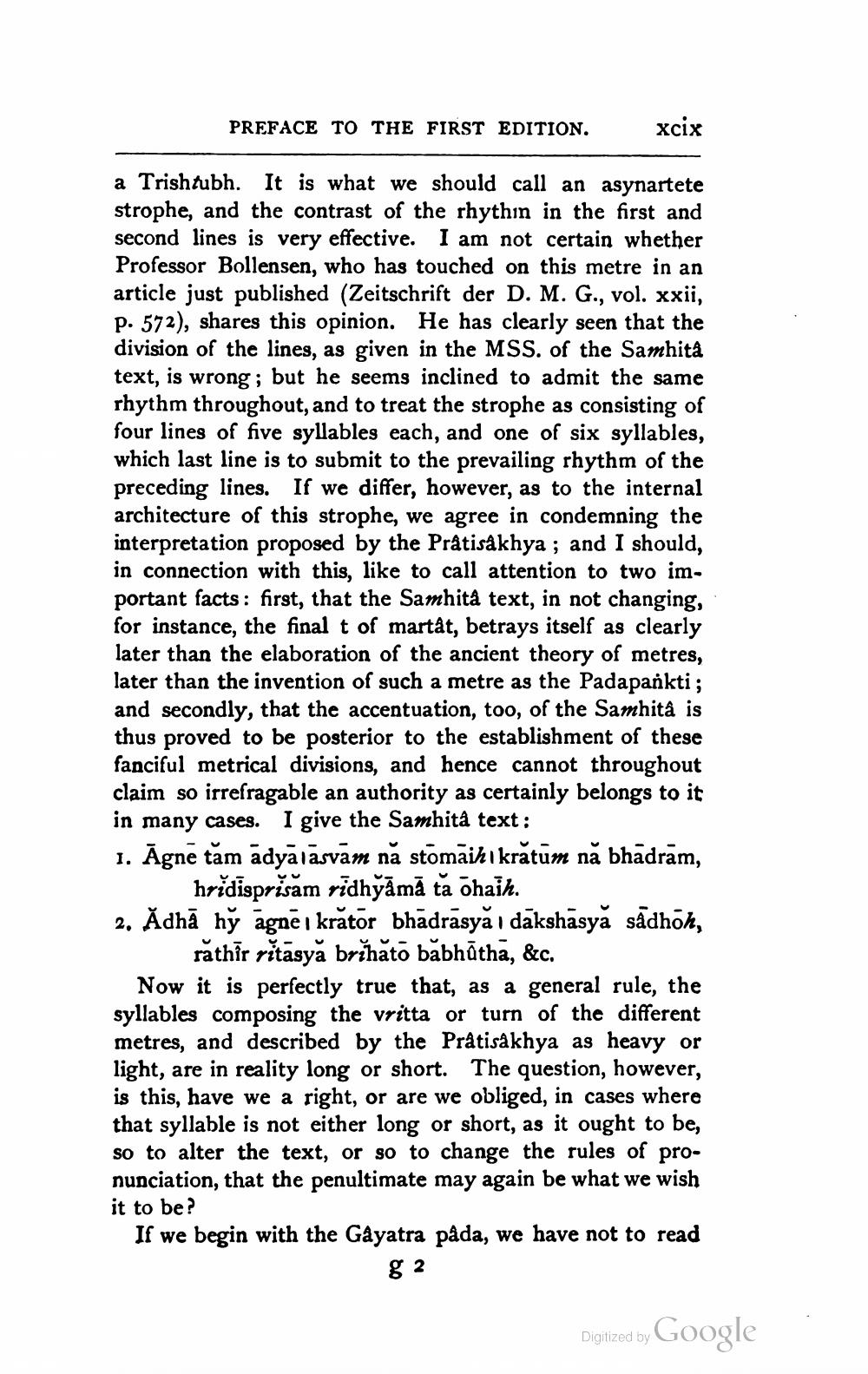________________
PREFACE TO THE FIRST EDITION.
xcix
a Trishtubh. It is what we should call an asynartete strophe, and the contrast of the rhythın in the first and second lines is very effective. I am not certain whether Professor Bollensen, who has touched on this metre in an article just published (Zeitschrift der D. M. G., vol. xxii, P. 572), shares this opinion. He has clearly seen that the division of the lines, as given in the MSS. of the Samhita text, is wrong; but he seems inclined to admit the same rhythm throughout, and to treat the strophe as consisting of four lines of five syllables each, and one of six syllables, which last line is to submit to the prevailing rhythm of the preceding lines. If we differ, however, as to the internal architecture of this strophe, we agree in condemning the interpretation proposed by the Prâtisakhya ; and I should, in connection with this, like to call attention to two important facts: first, that the Samhitå text, in not changing, for instance, the final t of martåt, betrays itself as clearly later than the elaboration of the ancient theory of metres, later than the invention of such a metre as the Padapankti; and secondly, that the accentuation, too, of the Samhita is thus proved to be posterior to the establishment of these fanciful metrical divisions, and hence cannot throughout claim so irrefragable an authority as certainly belongs to it in many cases. I give the Samhità text: 1. Agne tam advatarvam na stomak kratum na bhadram,
hridīsprisãm ridhịāmā tə öhaih. 2. Ădhā hý agnē i krător bhadrasyă i dākshāsya sādhoh,
răthir rītāsyă brihăto băbhāthā, &c. Now it is perfectly true that, as a general rule, the syllables composing the vritta or turn of the different metres, and described by the Prátisakhya as heavy or light, are in reality long or short. The question, however, is this, have we a right, or are we obliged, in cases where that syllable is not either long or short, as it ought to be, so to alter the text, or so to change the rules of pronunciation, that the penultimate may again be what we wish it to be? If we begin with the Gayatra pâda, we have not to read
g 2
Digitized by G
Digitized by Google




